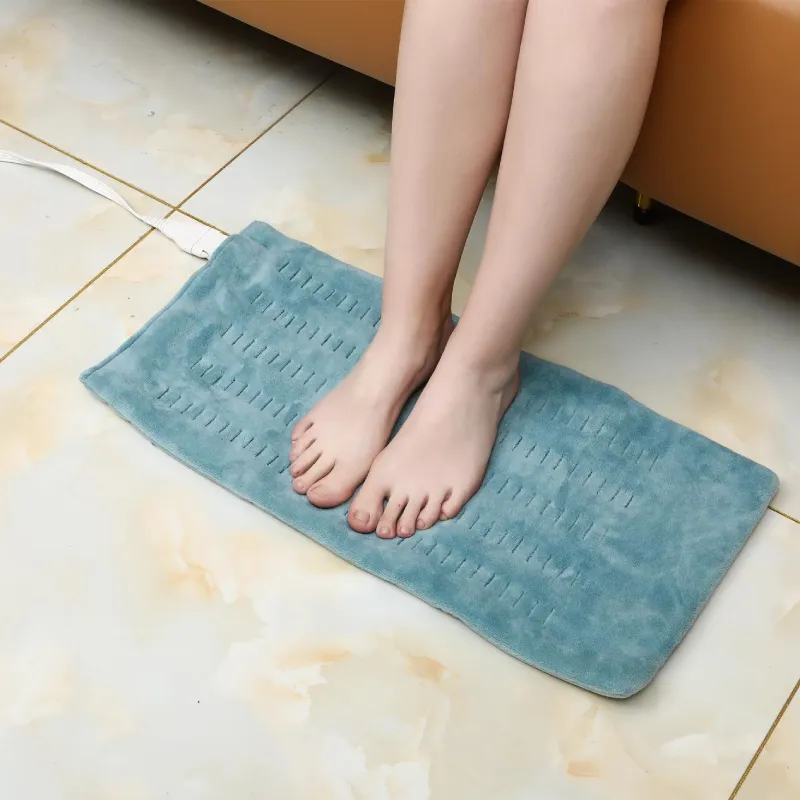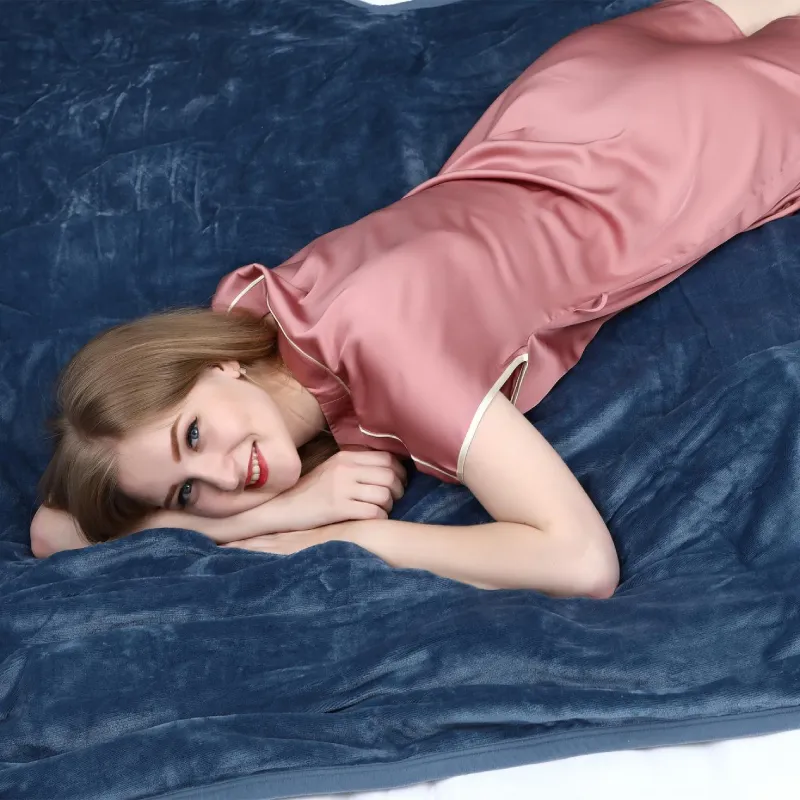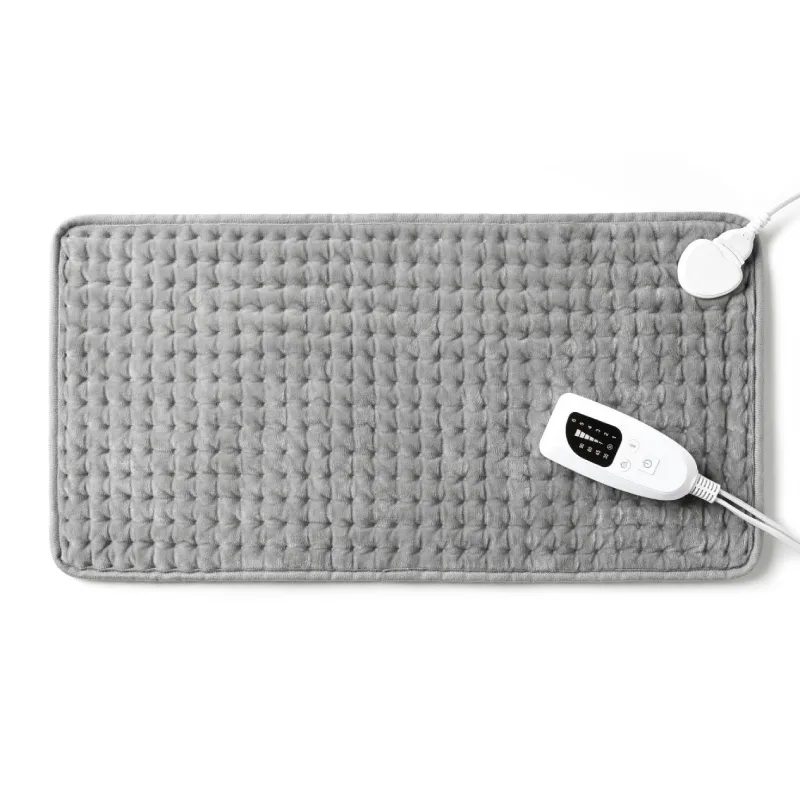
чэрв . 01, 2025 13:26 Back to list
Electric Blanket Running Cost Save on Energy Bills Efficiently
- Analyzing the true cost of operating electric blankets
- Energy consumption calculations and variables affecting running price
- Technical innovations reducing electricity requirements
- Manufacturer comparison table: wattage, features and cost efficiency
- Tailored solutions for different household scenarios
- Real-life application examples across heating situations
- Long-term savings perspective and economical alternatives
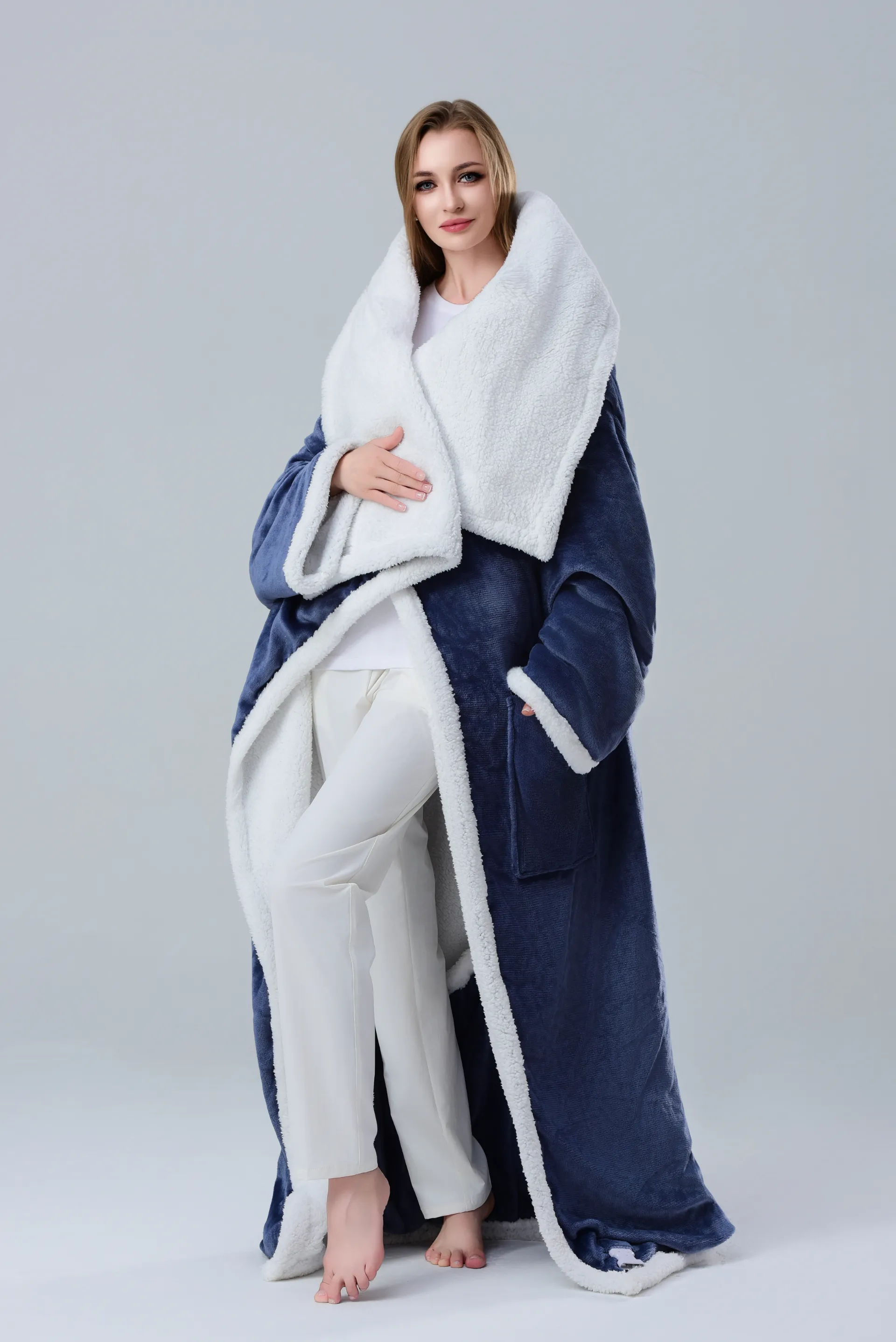
(electric blanket price to run)
Understanding Electric Blanket Price to Run Fundamentals
The operational expense of heated bedding primarily depends on wattage consumption. Standard electric blankets typically draw between 50-150 watts, while smaller heated throws may operate at just 35-100 watts. Usage patterns drastically influence actual costs – a blanket used 8 hours nightly during winter months accumulates significantly different charges than occasional use. Regional electricity rates also critically impact calculations, with costs ranging from 12¢ to 32¢ per kWh across US states. Unlike central heating which warms entire spaces, targeted body warming allows these devices to deliver comfort at approximately 3% of typical furnace operating costs.
Calculating Operational Expenses Accurately
Precisely determining heated throw cost to run requires analyzing multiple variables simultaneously. The fundamental formula remains: (Wattage ÷ 1000) × Hours Used × Electricity Rate. Consider these scenarios:
- A 100W blanket used 4 hours nightly for 150 cold days at 16¢/kWh: (100/1000) × (4×150) × 0.16 = $9.60 annually
- Premium 50W model same usage: $4.80 annual cost
- Basic 150W model same usage: $14.40 annually
Modern blankets with thermostat controls cycle power after reaching temperature, reducing actual consumption by 30-50%. Automatic shutoff features prevent unnecessary overnight usage, potentially cutting costs by another 15%. These technological refinements transform what appears to be a high-wattage product into an economically efficient solution.
Engineering Advancements in Energy Efficiency
Contemporary electric blankets incorporate multiple technologies specifically engineered to minimize electricity expenses. Carbon fiber heating elements distribute warmth more evenly while consuming 18% less power than traditional wire systems. Micro-fleece and thermal-reflective backing materials retain heat effectively, allowing lower thermostat settings for equivalent comfort. Dual-zone temperature controls enable personalized settings that avoid overheating unused sections, reducing energy waste by approximately 23% in couple-sharing scenarios. The most advanced models now feature smartphone connectivity, enabling preset warming schedules that activate only when needed.
Manufacturer Comparisons: Features Versus Operating Cost
| Brand/Model | Wattage Range | Key Features | Hourly Cost | Seasonal Cost |
|---|---|---|---|---|
| Biddeford Luxury Microplush | 100-180W | 10 heat settings, 10hr auto-off | 1.6¢-2.9¢ | $7.68-$13.92 |
| Sunbeam Quilted King | 120-200W | Dual controls, Pre-heat function | 1.9¢-3.2¢ | $9.12-$15.36 |
| Serta Reversible Throw | 60W | 3 heat levels, 3hr timer | 1.0¢ | $4.80 |
| Beautyrest UltraSoft | 85W | Machine washable, Quickheat | 1.4¢ | $6.72 |
| Pure Enrichment Weighted | 135W | 20lbs weight, 4 settings | 2.2¢ | $10.56 |
Calculated at $0.16/kWh national average
Based on 4hr nightly usage for 120 days
Serta's low-wattage approach demonstrates exceptional efficiency, while heavier weighted options like Pure Enrichment provide therapeutic benefits at reasonable operating expenses. Biddeford and Sunbeam offer premium features with slightly higher but still economical consumption profiles.
Customized Solutions for Diverse Needs
Selecting the optimal electric blanket involves matching product specifications to personal requirements. For solitary sleepers, twin-sized blankets between 60-90 watts deliver sufficient warmth while maintaining minimal running costs. Couples should prioritize dual-control queen/king models (100-150W total) which typically operate at lower costs than raising thermostat settings for entire bedrooms. Office workers benefit from heated throws consuming just 35-50W during work hours – approximately $0.56 monthly when used 3 hours daily at $0.16/kWh. Elderly users might prefer slightly higher-wattage options (100W+) that reach therapeutic temperatures faster, compensating for reduced circulation while remaining economical through automatic shutoff features.
Practical Application Scenarios
Regional climate variations dramatically affect operational expenses and product selection. In Minnesota's harsh winters (average 18°F January temps), residents typically use 180W blankets approximately 180 nights annually, costing $17.28 at 15¢/kWh. Conversely, North Carolina residents experience milder winters, where 100W throws used 90 nights cost $4.32. Unique use cases demonstrate exceptional economy:
- Energy-conscious homeowners set thermostats to 62°F while sleeping under 100W blankets, reducing HVAC expenses by approximately $35 monthly during winter
- Remote workers using heated throws instead of heating entire home offices save an estimated $1.10 daily
- Chronic pain sufferers utilize localized heat therapy for $0.03/hour rather than expensive hot water bottles or heating pads costing $0.12/hour to operate
Long-Term Value Assessment of Electric Blanket Operation
Evaluating cost of electric blanket to run reveals compelling economics compared to alternatives. Whereas running a 1500W space heater for 8 hours costs $1.92 nightly, premium electric blankets deliver similar comfort for just $0.12 – achieving 94% operational savings. When replacing central heating usage during sleep hours, most households recover blanket purchase prices within two heating seasons. Environmental advantages further enhance value propositions: using a heated blanket instead of raising home temperature just 3°F reduces average household carbon emissions by 160kg annually. With quality products lasting 5-7 years, the long-term financial and ecological impacts make modern electric blankets among the most efficient home heating investments available today.
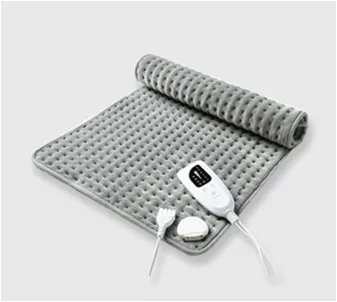
(electric blanket price to run)
FAQS on electric blanket price to run
Q: How much does it cost to run an electric blanket?
A: The cost to run an electric blanket depends on its wattage and local electricity rates. On average, using a 100W electric blanket for 5 hours daily costs around $0.15-$0.30 per month. Check your blanket’s wattage and multiply it by your electricity rate for precise estimates.
Q: Is an electric blanket cheaper to run than a heater?
A: Yes, electric blankets are typically cheaper to run than space heaters. They use 50-200 watts, while heaters use 1,500+ watts. This makes blankets 5-10 times more energy-efficient for personal warmth.
Q: What affects the running cost of a heated throw?
A: Key factors include the heated throw’s wattage, duration of use, and local electricity prices. Lower settings (e.g., 50W) and shorter usage times reduce costs. Timers and auto-shutoff features also help minimize expenses.
Q: How can I reduce my electric blanket’s operating cost?
A: Use lower heat settings, limit usage to necessary hours, and opt for models with timers. Pre-warming your bed and turning it off overnight can cut energy use by up to 50%.
Q: What’s the monthly cost to run a 150W electric blanket?
A: At $0.15 per kWh, running a 150W blanket for 6 hours daily costs roughly $4.05 monthly. Formula: (150W ÷ 1,000) × 6 hours × 30 days × $0.15. Adjust based on your usage and rates.
-
Keep Your Furry Friends Warm with Our Pet Electric Blankets
Aug.07,2025
-
Keep Your Furry Friends Cozy with a Pet Heating Blanket
Aug.07,2025
-
Heated Mattress Blankets
Aug.07,2025
-
Experience Unmatched Comfort with Electric Blanket Double
Aug.07,2025
-
Warm Winter: The Perfect Choice For A Cozy Electric Blanket
Aug.07,2025
-
Discover the Comfort of Heating Pads for Relief and Relaxation
Aug.07,2025
Realted Products
